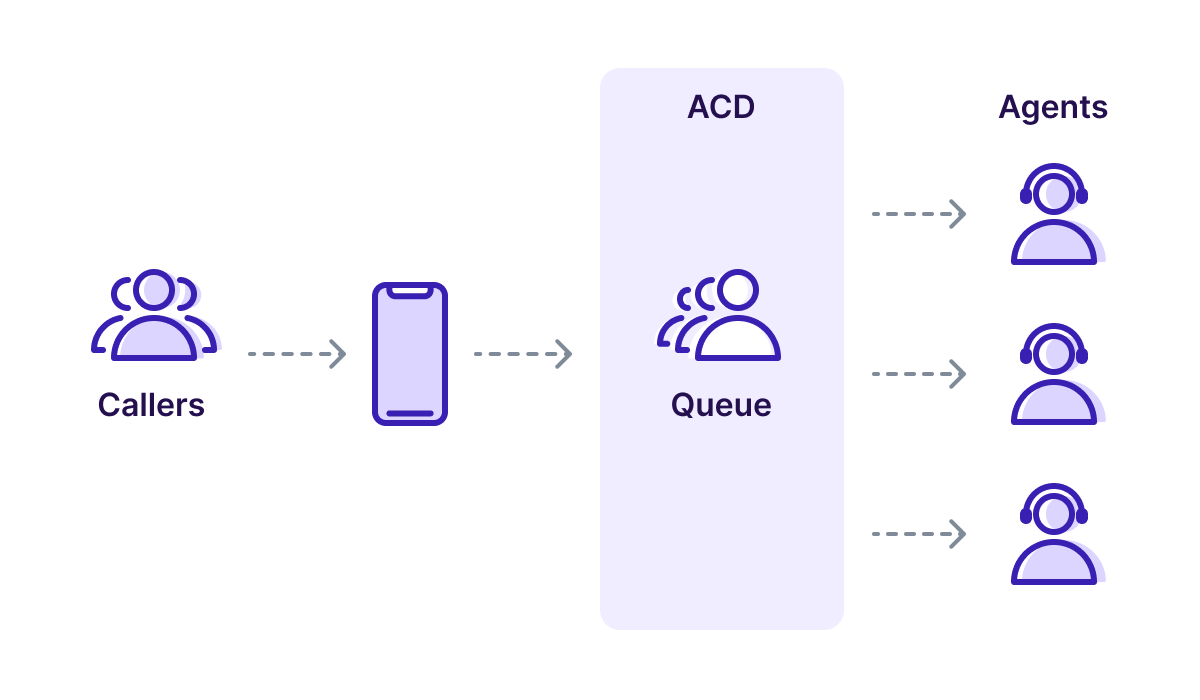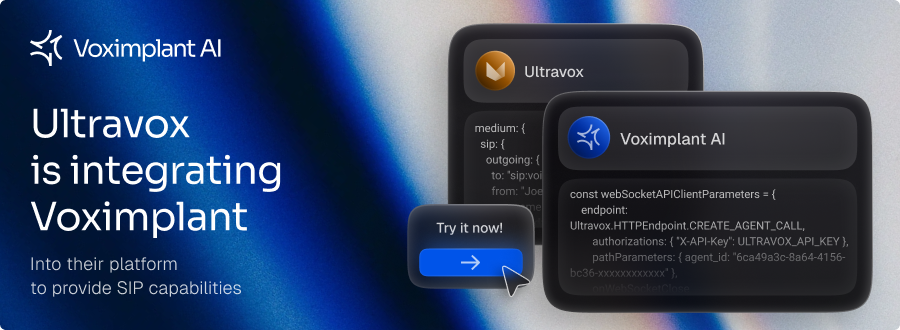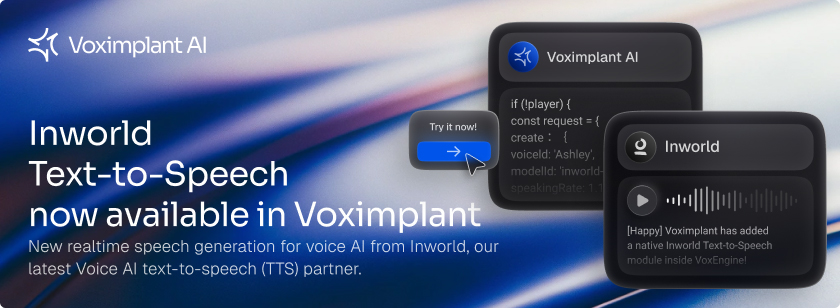Picking up the phone remains a crucial part of building a reputation and ensuring productive work operations; however, you might already be aware of the problem of agents being inundated with calls. A basic phone system is often not enough to handle the load.
Automatic Call Distribution (ACD) streamlines and improves customer service operations by turning a flood of incoming calls into an organized queue based on the distribution method you choose.
What Is ACD?
An Automatic Call Distributor (ACD) is a piece of software that distributes incoming calls to different services. Callers aren’t necessarily pushed to the first agent that’s available. It is up to you to configure the ACD to route calls based on the operator's area of expertise, availability, call traffic, etc.
The main goal is to enhance productivity. ACD also helps you deal with callers who don’t stick to normal business hours and it prevents you from losing customers when you receive a high volume of calls.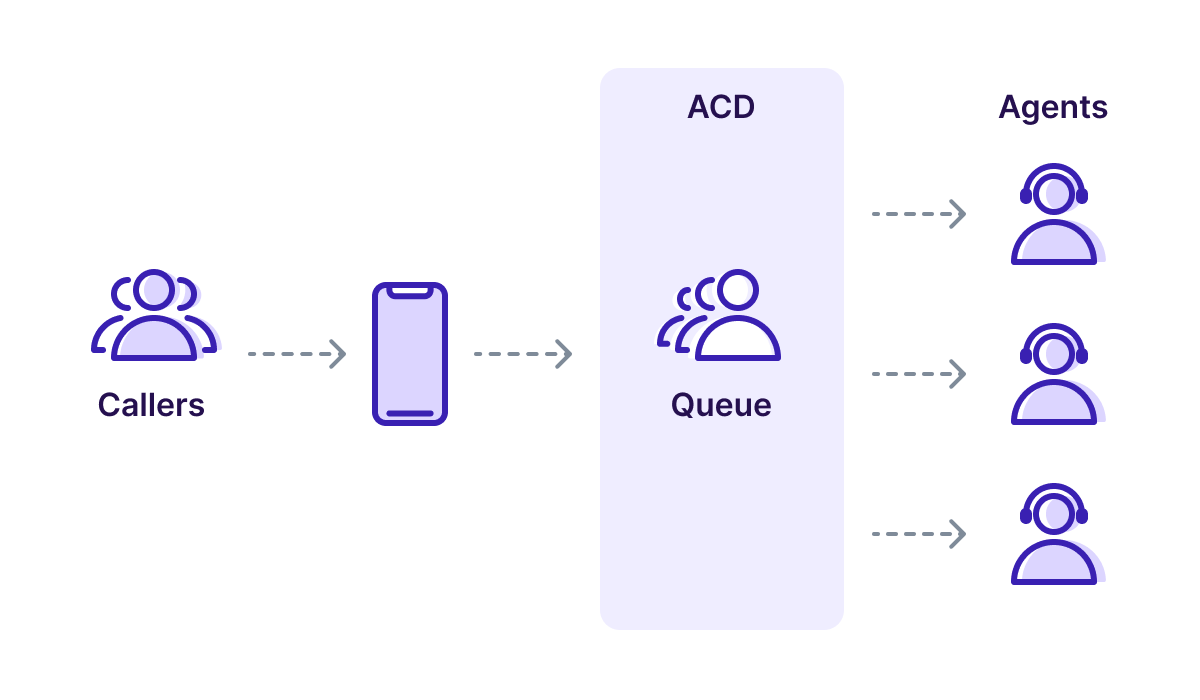
In addition to assigning customers to the appropriate operators, ACDs offer a variety of other features. For example, they can estimate queue times or give customers the option of being automatically called back at a later time. They can also blend inbound/outbound calls by transferring calls to outbound agents whenever they experience a surge of inbound calls. The functionality is as versatile as the processes taking place at a call center (or a similar facility).
Many ACD systems aren't just limited to phone calls and include multi-channel support for chat, email, social media, and more.
Additionally, the more information you can gather from your callers, the better. A great ACD system will import customer data from company CRMs and pass it along to your operators. This allows operators to handle requests while having relevant information on a given caller – previous calls, recurring issues, etc. – on hand during the call.
Smart Call Routing
Reiterating what has been said earlier, an ACD system facilitates smart call routing by forwarding calls depending on how the phone system is programmed. Automatic caller ID is one of the main features that allows ACD to perform this smart routing.
Parameters that you set can be something along the lines of:
- Incoming calls received after office hours can be efficiently handled by IVR (Interactive Voice Response)
- Calls originating from a certain region can be routed to agents who speaks that language
- Identify high-priority callers and attend to them ahead of others
Here is an example of how it would take place. A person has lost their credit card and wants to notify their bank immediately. They call their bank, which has an ACD system. Depending on when they make the call, they will be connected to an IVR or an agent.
Let’s say the caller reached out during normal business hours. Even in this case, the bank can set up an IVR that allows the caller to select the lost credit card option. This way, the caller doesn’t have to wait for a regular customer support agent and can be directly routed to the team that handles credit cards.
Difference Between ACD & IVR
An automatic call distribution system has multiple features, one of which could be IVR. ACD may or may not include IVR. .
The IVR system intercepts the calls that your phone system receives. Callers are presented with several options, such as talking to a specific department or checking the order status. In some cases, the task can be accomplished without human intervention. If the task requires a live agent, the ACD system will kick in.
- ACD determines the area code of a telephone number, the time of the day, what agents are most skilled for this request, etc. Then, it is responsible for connecting calls to the appropriate agent.
- IVR greets callers, informs them about the waiting times, and asks for user input to retrieve information about the nature of their call. You might have heard at some point something like, “To book a new flight ticket, please press 1,” which is a classic example of IVR.
So, the ACD system transfers calls to the correct department or agents which is determined by what options the caller selects when they interacted with the IVR.
Business Benefits
Automatic call distribution handles calls accurately and reliably. What kind of business perks does it provide? Here are the top five benefits that you can expect after employing an ACD system:
- Faster response to calls – Automated routing and caller pre-qualification take very little time. When businesses improve their responsiveness, they have a better chance of appropriately serving their callers and avoid losing potential leads.
- Optimized agent productivity – The parameters for call routing ensure that callers will interact with employees that can directly help them. Therefore, agents waste less time trying to figure out issues that are beyond their training or knowledge.
- Better use of resources – ACD minimizes downtime and agents are engaged in tasks they are equipped to do. Plus, you can get access to caller data to figure out problems that are in other domains, like sales and marketing.
- Improved call resolution rates – Overall call handling time is reduced. Since callers are directed to agents with the relevant area of expertise, their issues are resolved as quickly as possible with no need to transfer them to other departments.
- Great customer experience – Customers notice when brands communicate with them in a timely, consistent manner. Next time they have an issue, they won’t hesitate to call you again.
ACD for Call Centers
Many business owners assume that only large enterprises deploy call centers but a call center might be even more beneficial to a growing business. In any case, a company should ensure that its call center agents have everything they need to work smoothly and efficiently.
Automatic call distributor is a crucial component of good call center software since it streamlines the communications process. Plus, ACD minimizes the number of callers who don’t receive an answer or are stuck on hold for several minutes, thus, improving the overall customer experience.
ACD for Banks
Banks and financial service institutions receive numerous queries both from customers and business representatives. The issues can vary from simple queries like transaction updates to more complex ones like a loan application.
For the sake of handling these requests, banks are usually divided into multiple departments and sub-departments. An ACD system will make sure that callers are connected with agents trained in the relevant area.
ACD for Emergency Services
When someone makes an emergency call, they need an immediate response so when it comes to paramedics, emergency medical technicians, police officers, firefighters, rescuers, and public workers, it's important to establish an effective phone system. Since ACD helps you achieve shorter response times, it is a useful asset for first responders.
ACD for Delivery and Logistics
Some of the biggest issues in logistics and supply chains are delivery and quality control, supply disruption, technical problems, and production disruption. It appears that these risks are directly related to efficient telecommunication systems and information exchange. ACD can facilitate better cooperation between employees, suppliers, and customers at any stage of production and delivery.
ACD for Retail and E-Commerce
Contextual routing can contribute to a great personalized experience for your customers. For example, you can collect data from the shopper’s experience (web or mobile activity, loyalty program, or location) and connect them with the associate best equipped to help.
Popular Call Distribution Methods
There are multiple call distribution methods that use different rules and suit different needs. Below are six of the most popular ones that modern businesses have in place:
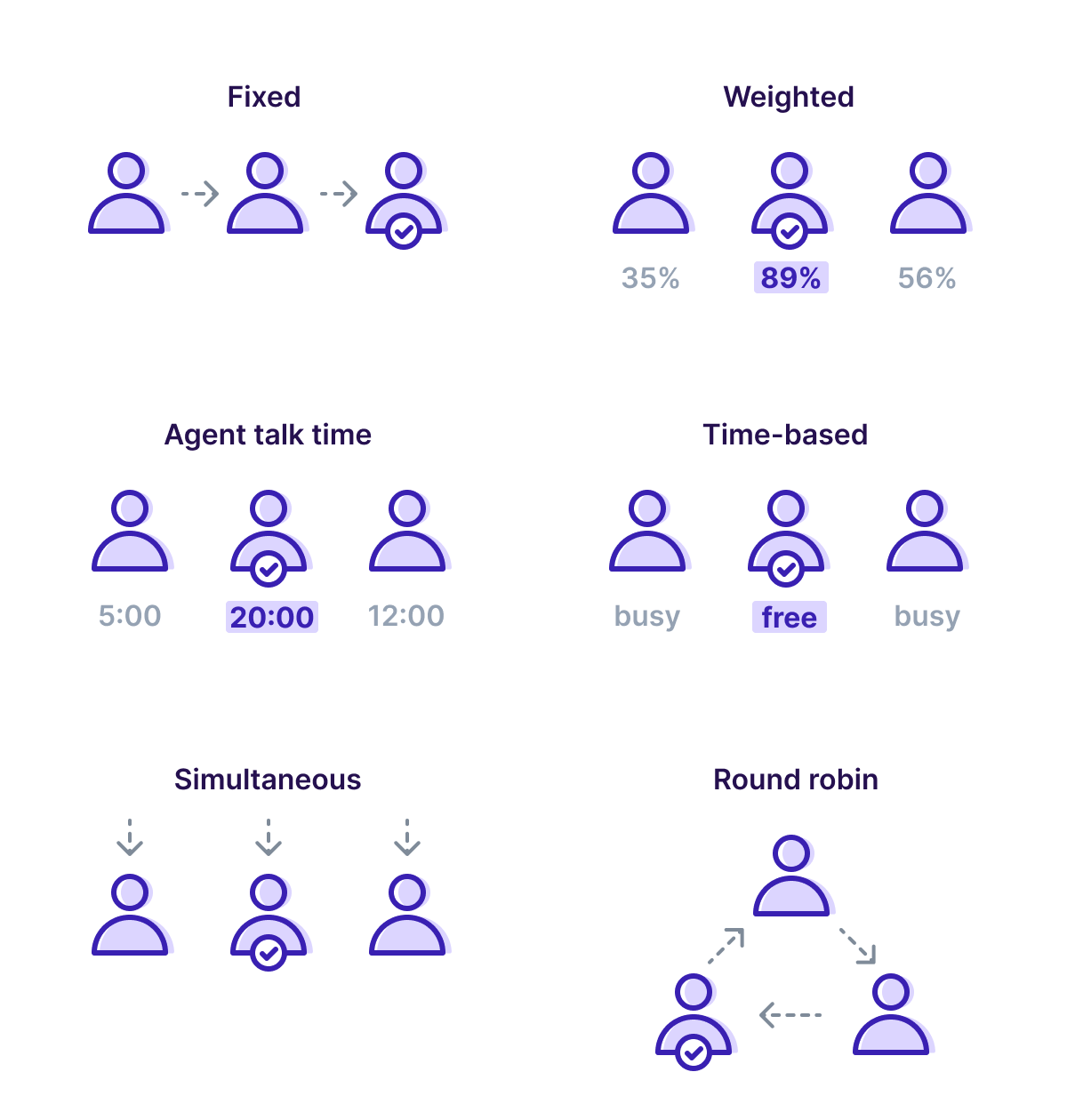
- Fixed order – This system is meant to prioritize some agents over others by using a certain pre-programmed order. When the system receives a call, it goes through the agent list and only assigns the call to the next agent in the list if the first one is unavailable.
- Round robin – All new calls are routed in a continuous loop to ensure all agents receive an even amount of calls. The first call is directed to agent A, the next one to agent B, then agent C, and so on. This system works for more generalized requests with no need for specialized knowledge from the agent.
- Simultaneous distribution – With this approach, the call rings for every agent at the same time and the first agent that picks up the call will handle it. This method is one of the quickest ways to connect the customer to an operator.
- Time-based routing – ACD employees set their own availability statuses. Instead of directing a call to all agents and waiting for them to pick up, agents whose status is marked as busy will not be alerted to the call. When the number of available lines is reduced, it decreases wait times for callers.
- Agent talk time – Other methods may leave some agents idle. With this method, calls are routed to whom ever received the least amount of calls. In other words, it prioritizes the least-active agents.
- Weighted order – This approach is also referred to as skills-based routing. It takes into consideration an operator's knowledge, experience, language proficiency, etc. The higher the agent’s score in a specific skill, the more likely it is that they will receive the call. It ensures that callers will only be connected to those employees who are equipped to handle their requests.
Future Technology
What will the future of call centers look like with ACD still around? There are several possibilities. The first is that call centers will still exist and operate roughly the same way they do today. The reason could be that much of it boils down to human interaction.
However, the opposite could be true as well. As digital technology grows and acquires new skillsets, AI and automated responses will be able to take on more complex tasks. The demand for efficiency might become the deciding factor for whether we still need live agents.
That being said, a more plausible scenario is that contact centers will evolve. They will still exist, but the way they interact with and serve customers will change dramatically because of automated systems. Also, it is likely that more and more contact centers will become cloud-based. Not only does it free businesses from maintaining physical buildings, but it also enables remote work for employees.
Another reason why ACD will become more widely used is the functionality brought by other systems. For example, IVR with a smart directory ensures a positive, personalized experience and funnels callers to distinct, specialized teams with no delay. CRM integration with ACD also has a prominent benefit for companies. It helps with accurate call distribution and allows agents to know more about callers, before and while talking to that person.
Voximplant offers all the functionality to build an effective call center, including an automatic call distributor. Naturally, you want your phone system to meet your specific requirements, and we are happy to discuss all options with you.

